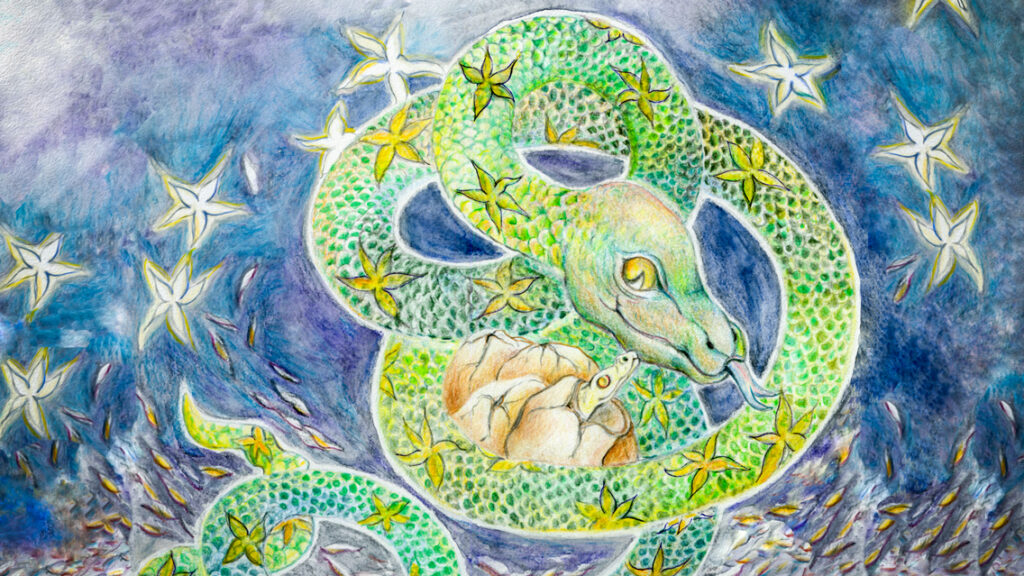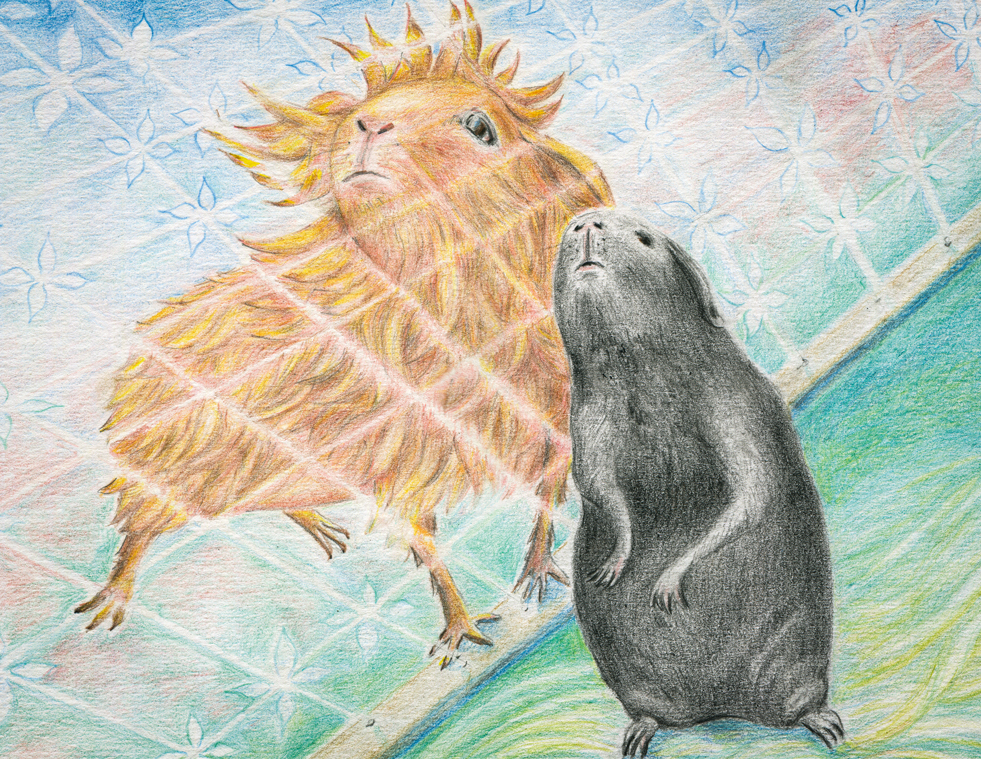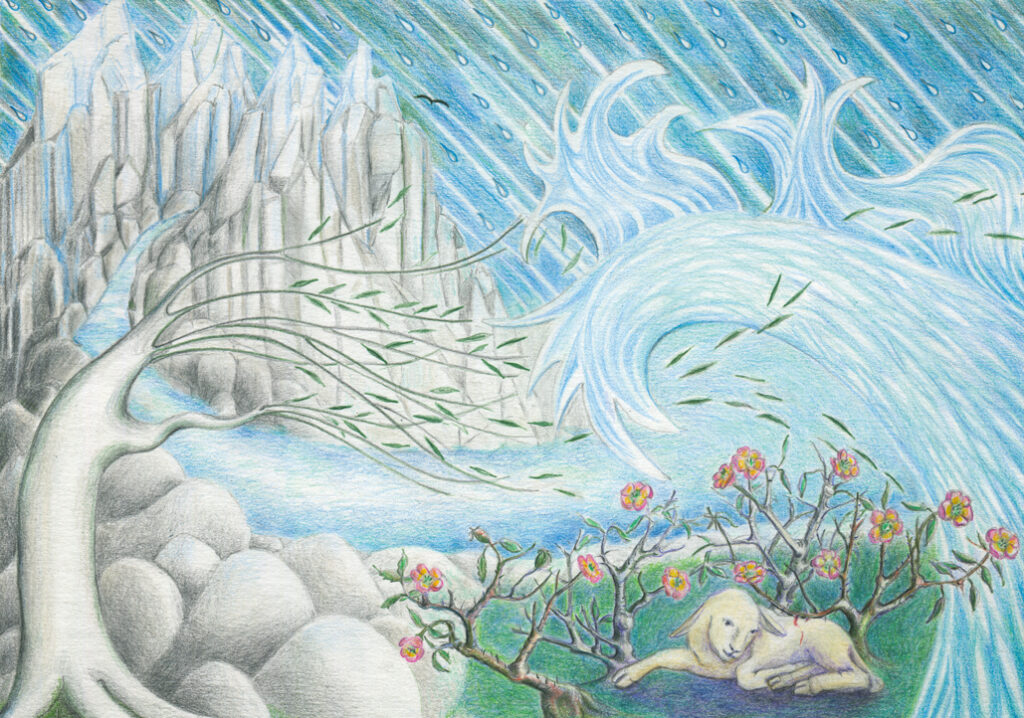
A love of dream and story
I’VE always been captivated by the power of stories and their ability to transport us to fantastic realms. Dreams and the workings of the mind equally fascinate me. As a child, fairy tales were my world—I would spend blissful hours lost in reading and rereading them, illustrating my favourite stories with drawings, bringing their magic to life.
Over time, my love for these tales deepened, and when I met Adrian we discovered a mutual passion for poetry, myth, fairy and folk tales, and all forms of imaginative literature. Home-educating our five children encouraged us to produce many new stories, keeping the joy alive.
Mother Moth
Mother Moth is a 266-page novel that draws on the rich tradition of classic fairy tales. It tells the story of ten-year-old Elspeth, who lives a peaceful life with her widowed father at Milkcow Farm. Though life seems idyllic, Elspeth feels her father’s deep loneliness, knowing he misses the successful magic act he once performed alongside her late mother.
As Elspeth uncovers an extraordinary paranormal ability to communicate with animals and insects, she is both awed and unnerved. Her gift reveals a dark truth: an ancient and malevolent witch named Mother Moth is regaining her magic, using Elspeth as the unwitting source of her power.
While Elspeth attempts to help her father revive his stage career, every effort ends in failure. Her search for answers leads her to an old book called the Mysterium Magicum, where she uncovers terrifying revelations about her abilities and Mother Moth’s deadly intentions. Elspeth realises that the witch is not only after her powers but also out to take her life.
Elspeth must defy her father’s rational outlook and embrace the mystical forces within her. She must use powers not her own and tied to a darker sinister nature to fight for good. Befriended by a goblin in a strange, twilight world where nothing is as it seems, Elspeth is caught in a battle for her life, struggling to control forces beyond her understanding. As she faces the terrifying Mother Moth, Elspeth must solve the riddle of her identity and prepare for a final, deadly confrontation.
What I find fascinating about the world of fairy tale is that it is the everyday world shifted to a different shape. In Mother Moth the boundaries between the ordinary world and the world of magic constantly shift and dissolve.
When I drew Elspeth and the goblin Gryll, I wanted them to seem joined. The scene is both palpable and dreamlike, the goblin, with his huge prehensile toes, appearing more real than Elspeth, who looks ghostlike. Gryll’s toes dance upon the belt, play it like a musical instrument. His hand teases at the smoke. It’s as if it is the goblin who dreams Elspeth rather than she who dreams him.
Mother Moth was enormous fun to illustrate and a great read. I can’t urge you enough to get hold of a copy.
Lionheart & Rita, a little love that changed the world is the story told in verse of two guinea pigs, one tawny like a lion and the other jet black. Deeply in love, Lionheart and Rita’s bond is undeniable, yet their happiness is disrupted by the rules of selective breeding, which have chosen a different mate for Rita—Calvin, Prince of Pigs, a black guinea pig like herself. Calvin revels in his victory, as the law grants him the right to be with Rita. He boasts about the wire cage that enforces Lionheart and Rita’s painful separation. The two are devastated:
They lived at night,
with dark to hide them,
dreamed inside each other’s sleep,
no Calvin to divide them.
And when the sun came up
and splashed his golden cup
into the eyes of each sad sleeper,
Lionheart woke up Rita —
“Reet! Reet! Reeta!” —
his song to greet her.
“Oh, my love,” Lionheart sang,
“What cage can stop the rising sun
from staining every blade of grass with glory?
What cage can stop the forest roots,
or evening’s seeping purple cool,
or the ivy vine, who loves to twist and twine?
The gentle dew that feeds the leaf
devours the iron bar.
Whatever law is made, my love,
sweet weeds will rush to cover
and bandage up the wound with flowers.”

Guinea pigs have always been among my favourite pets, so illustrating Lionheart & Rita was a delight. The book not only offers a window into the lives of two extraordinary creatures, but explores deeper connections between animals and humans. It’s a meditation on oppression and freedom, highlighting the fragility of our shared environment and the devastating heartbreak thathuman actions have caused our world. Yet the story offers hope, suggesting the possibility of restoration achieved through a child’s innocent vision:
“Before the mountains’ feet were bound,
when rivers put their lips to the seas
and deserts poured out their hearts of gold
to fill the cells of honey bees,
before the willow learnt to weep,
when tears rolled down the cheeks of the storm
and white lambs hung their pitying coats
on the rose’s blood-soaked thorn —
the only law was a law that flowed:
over the bubbling pastures in spring,
around the nests in the foamy clefts,
under the feathers of every wing.”




